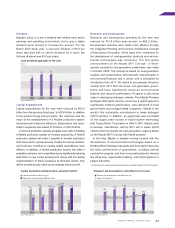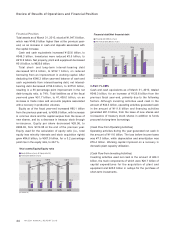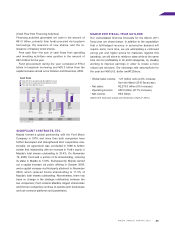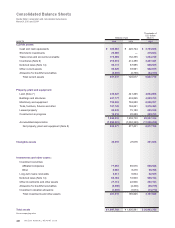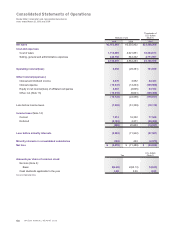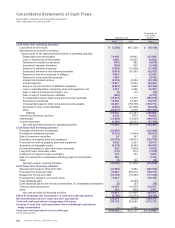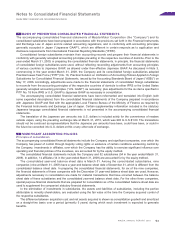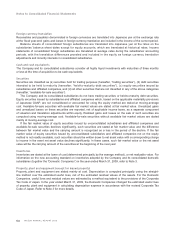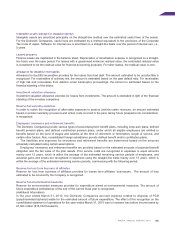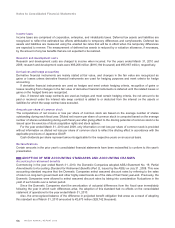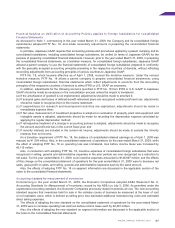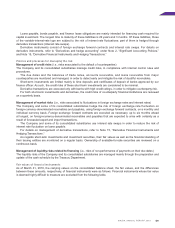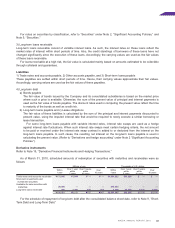Mazda 2010 Annual Report Download - page 55
Download and view the complete annual report
Please find page 55 of the 2010 Mazda annual report below. You can navigate through the pages in the report by either clicking on the pages listed below, or by using the keyword search tool below to find specific information within the annual report.
53
The accompanying consolidated financial statements of Mazda Motor Corporation (the “Company”) and its
consolidated subsidiaries have been prepared in accordance with the provisions set forth in the Financial Instruments
and Exchange Law of Japan and its related accounting regulations, and in conformity with accounting principles
generally accepted in Japan (“Japanese GAAP”), which are different in certain respects as to application and
disclosure requirements from International Financial Reporting Standards (“IFRS”).
Consolidated foreign subsidiaries maintain their accounting records and prepare their financial statements in
conformity with generally accepted accounting principles prevailing in the respective countries of domicile. Prior to the
year ended March 31, 2009, in preparing the consolidated financial statements, in principle, the financial statements
of consolidated foreign subsidiaries were used, without reflecting reconciling adjustments from accounting principles
of various countries to Japanese GAAP, as allowed under then-effective Japanese GAAP. As discussed in Note 3,
commencing in the year ended March 31, 2009, the Company and its consolidated foreign subsidiaries adopted
Practical Issues Task Force (“PITF”) No. 18, Practical Solution on Unification of Accounting Policies Applied to Foreign
Subsidiaries for Consolidated Financial Statements, issued by the Accounting Standards Board of Japan (“ASBJ”) on
May 17, 2006. Accordingly, adjustments were made to the financial statements of consolidated foreign subsidiaries
to reconcile from the accounting principles of the respective countries of domicile to either IFRS or the United States
generally accepted accounting principles (“U.S. GAAP”) as necessary, plus adjustments for the six items specified in
PITF No. 18 from IFRS or U.S. GAAP to Japanese GAAP as necessary in consolidation.
The accompanying consolidated financial statements have been reformatted and translated into English (with
some expanded descriptions) from the consolidated financial statements of the Company prepared in accordance
with Japanese GAAP and filed with the appropriate Local Finance Bureau of the Ministry of Finance as required by
the Financial Instruments and Exchange Law of Japan. Certain supplementary information included in the statutory
Japanese language consolidated financial statements is not presented in the accompanying consolidated financial
statements.
The translation of the Japanese yen amounts into U.S. dollars is included solely for the convenience of readers
outside Japan, using the prevailing exchange rate at March 31, 2010, which was ¥93 to U.S.$1.00. The translations
should not be construed as representations that the Japanese yen amounts have been, could have been, or could in
the future be converted into U.S. dollars at this or any other rate of exchange.
Principles of consolidation
The accompanying consolidated financial statements include the Company and significant companies, over which the
Company has power of control through majority voting rights or existence of certain conditions evidencing control by
the Company. Investments in affiliates, over which the Company has the ability to exercise significant influence over
operating and financial policies of the investees, are accounted for by the equity method.
The consolidated financial statements include the Company and 52 subsidiaries (54 in the year ended March 31,
2009). In addition, 14 affiliates (14 in the year ended March 31, 2009) are accounted for by the equity method.
The consolidated year-end balance sheet date is March 31. Among the consolidated subsidiaries, nine
companies (nine at March 31, 2009) have a year-end balance sheet date of December 31, which is different from the
consolidated balance sheet date. In preparing the consolidated financial statements, for six of the nine companies,
the financial statements of these companies with the December 31 year-end balance sheet date are used. However,
adjustments necessary in consolidation are made for material transactions that have occurred between the balance
sheet date of these subsidiaries and the consolidated year-end balance sheet date. For the other three companies,
special purpose financial statements that are prepared for consolidation as of the consolidated balance sheet date are
used to supplement the companies’ statutory financial statements.
In the elimination of investments in subsidiaries, the assets and liabilities of subsidiaries, including the portion
attributable to minority shareholders, are evaluated using the fair value at the time the Company acquired control of
the respective subsidiaries.
The difference between acquisition cost and net assets acquired is shown as consolidation goodwill and amortized
on a straight-line basis over a period (primarily 5 years) during which each investment is expected to generate
benefits.


